ONE change for better diabetes control
The Dexcom ONE real-time Continuous Glucose Monitoring (rt-CGM) system helps your patients on insulin, ages 2 years and older, get one step closer to better diabetes control - with zero finger pricks,* no scanning or calibrations required.
An up to 10-day wearable sensor sends glucose readings and trends automatically to a smart device† every 5 minutes. It features optional high and low alerts that warn when glucose levels are out of range. More frequent access to glucose insights leads to more effective diabetes management.
*If your glucose alerts and readings from Dexcom ONE do not match symptoms or expectations, use a blood glucose meter to make diabetes treatment decisions.
†For a list of compatible devices, visit www.dexcom.com/compatibility.
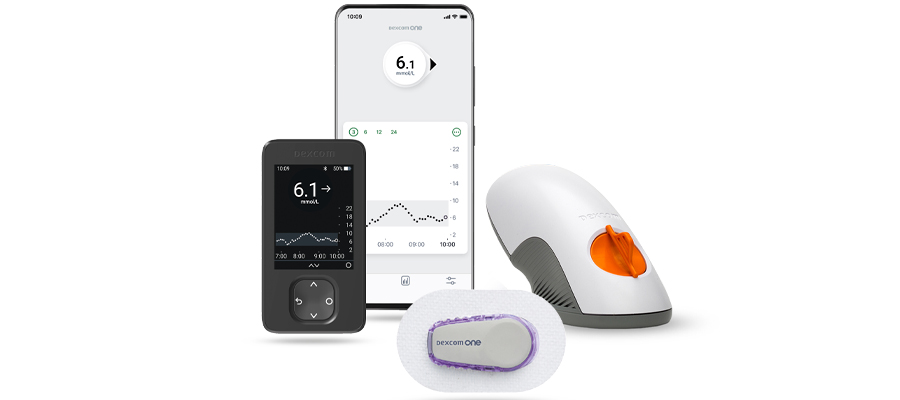
Smart devices sold separately†
Why prescribe Dexcom ONE?
Dexcom ONE helps people with diabetes achieve and maintain control by providing reliable and accurate1 information about their real-time glucose levels, straight to their device.† Combined with a suite of alerts, including high and low alerts, and delayed 1st alert, this can help simplify the way you treat—in-person or via remote clinic appointments—to maximise their care.
Zero finger pricks* or calibrations
Dexcom ONE users can enjoy the freedom of managing their diabetes without having to prick their fingers or scanning! Dexcom ONE is designed to eliminate the need for finger pricks* or scanning, even when making diabetes treatment decisions.
Glucose values and trends, available with just a glance
The current glucose level and the trend arrows are automatically updated every 5 minutes in the Dexcom ONE app on a compatible smartphone† or optional receiver. It only takes a quick glance to get the full picture of glucose levels & trends.
Optional high and low glucose alerts
Users can be alerted when their glucose falls outside of high and low glucose thresholds. Alert levels and notification methods (sound or vibrations) can be customised.
Delay first alert
Enables users to delay their first alert until their sensor reading is at, or past, the designated alert setting for a user-specified amount of time. This allows users to choose if they only want to receive High Alerts when they want to take action.
Exceptional Accuracy 1
Thanks to the exceptional accuracy1 of Dexcom ONE, patients can make treatment decisions*, like insulin dosing, directly from their current glucose value and trend arrow. Dexcom ONE doesn't require any calibration to deliver accurate readings unlike other systems.
Optional receiver
Dexcom ONE shares data with compatible smartphones† but an optional receiver is available for people with diabetes who may not have access to such devices.
* If glucose alerts and readings from Dexcom ONE do not match symptoms or expectations, use a blood glucose monitor to make diabetes treatment decisions.
Dexcom ONE components
Using the auto-applicator, people with diabetes or caregivers can insert the sensor and then snap in the transmitter. Then, they will be able to view glucose data from the transmitter via a selected display device†.
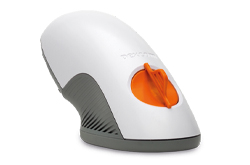
Auto-Applicator
Simplifies the sensor insertion process with a push of a button. In a study, 84% of Dexcom users reported painless sensor insertion.1
Watch our “Sensor insertion” video for more details.
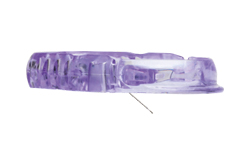
Sensor
Monitors interstitial glucose levels through a small wire inserted just underneath the skin, sending a signal to the transmitter. It can be worn for up to 10 days and is water-resistant (shower, swimming).§
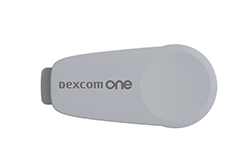
Transmitter
Fastened on top of the sensor; sends data wirelessly to the wearer's compatible display device† (3-month lifespan).††
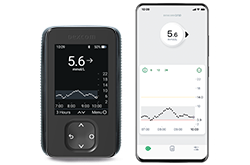
Display Device
Shows glucose readings and trend data on the touchscreen receiver or the patient’s compatible smart device.†
Who could benefit from Dexcom ONE

In line with UK Consensus and Criteria Guidance as well as updated NICE guidance, Dexcom ONE can be used by anyone with type 1 or type 2 diabetes over the age of 2 years, including pregnant women.
Dexcom ONE is suitable for people with diabetes irrespective of whether they use a pump or are on multiple daily injections.
To find out more information on how to access Dexcom ONE on prescription for people with diabetes, speak to a Dexcom Representative.
* If glucose alerts and readings from Dexcom ONE do not match symptoms or expectations, use a blood glucose monitor to make diabetes treatment decisions.
† For a list of compatible devices, visit www.dexcom.com/compatibility.
§ Dexcom ONE sensor and transmitter are water-resistant and may be submerged under eight feet of water for up to 24 hours without failure when properly installed.
1 Shah VN, et al. Diabetes Technol Ther. 2018
†† Transmitter lasts for three months therefore it may be reused for multiple sensor sessions. Dexcom ONE tells you when your transmitter will need to be replaced, starting 3 weeks before.